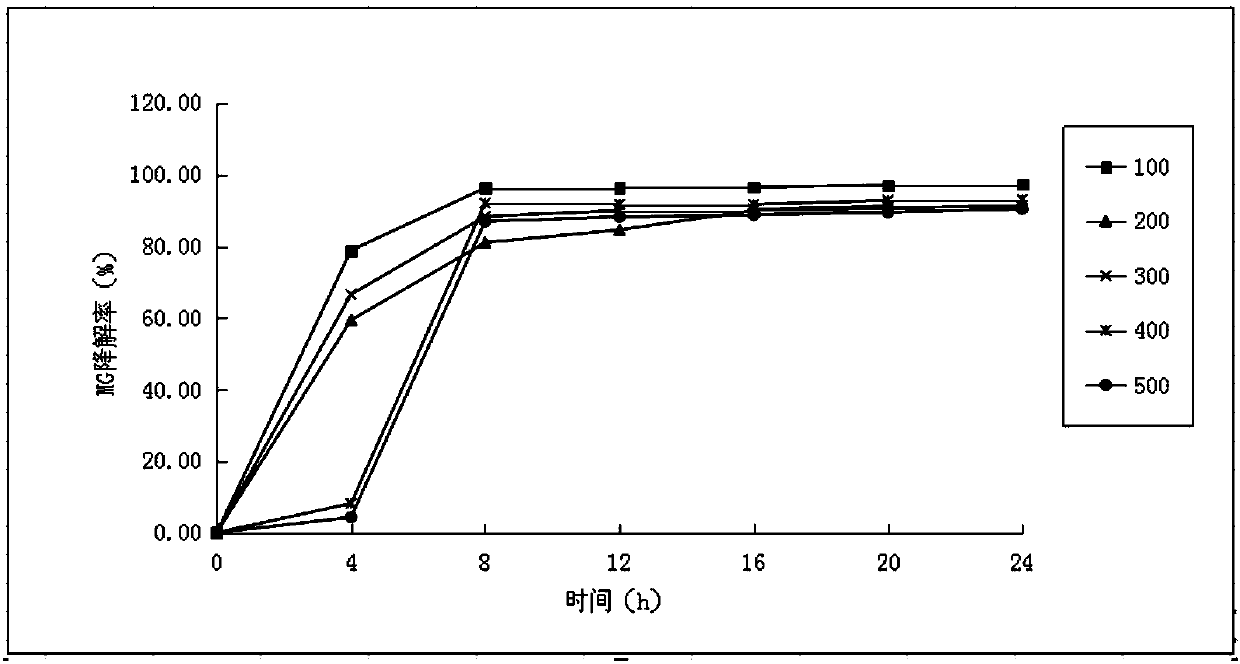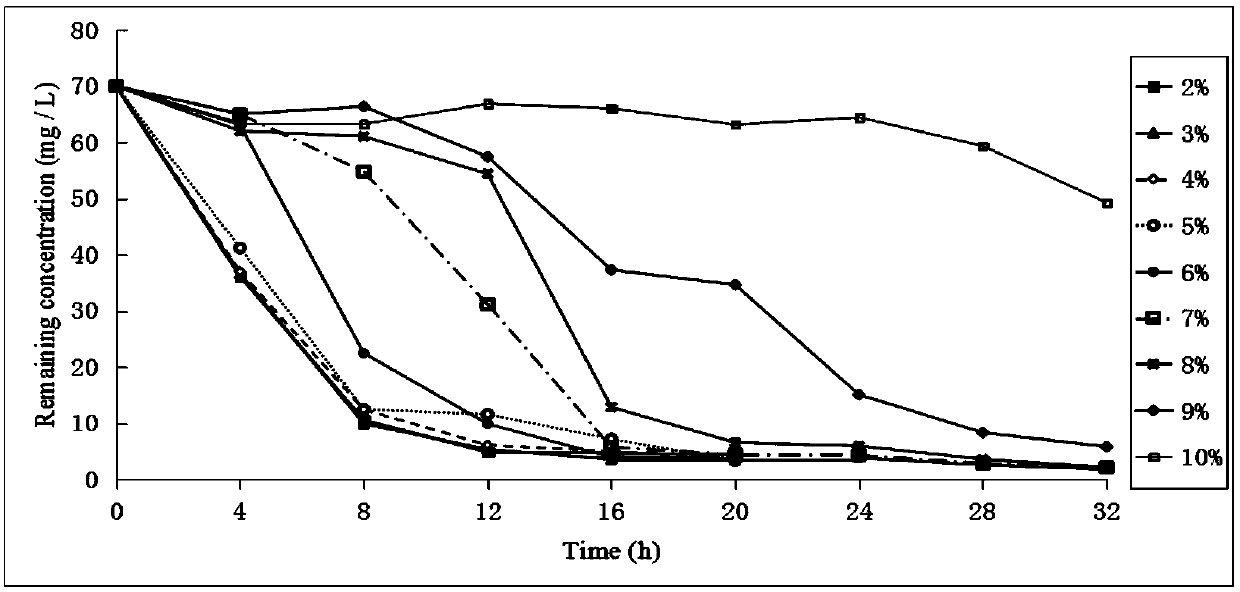Enterobacter aerogenes for degrading malachite green in high-salinity environment
A technology of Enterobacter aerogenes and malachite green, which is applied in the field of environmental microorganisms to achieve broad application prospects and high degradation efficiency
- Summary
- Abstract
- Description
- Claims
- Application Information
AI Technical Summary
Problems solved by technology
Method used
Image
Examples
Embodiment 1
[0021] Example 1 Screening of Enterobacter aerogenes S27 and degradation of malachite green
[0022] Collect Suaeda salsa strains from coastal saline-alkali land in Dongying City, Shandong Province, wash them twice with sterile water, soak them in 75% alcohol for 3-5 minutes, wash them twice with sterile water, soak them in 0.1% mercury liter for 5 minutes, and soak them in sterile water for 5 minutes. Rinse 8 times. Take 100 μL of sterile water after the last rinse and smear the plate as a control. Take two sections of sterilized Suaeda salsa about 5cm into the mortar, add 2mL of sterile water, grind and take the supernatant, and dilute it in multiples. 100 μL of LB plates coated with 0.5%, 3% and 5% NaCl (w / v) concentrations were taken respectively, and cultured at 30° C. for 48 h. The isolated strain was purified by streaking method and dilution coating plate method, and purified Enterobacter aerogenes (Enterobacter aerogenes) S27 was obtained. The colony was viscous and ...
Embodiment 2
[0024] Example 2 Enterobacter aerogenes S27 salt tolerance test
[0025] The S27 strain was inoculated in LB medium and cultured overnight at 30°C in a shaker with a rotation speed of 150rpm to obtain an overnight culture; In 2%, 3%, 4%, 5%, 6%, 7%, 8%, 9%, 10%, 11%, 12%, 13%, 14% LB liquid medium, observe the growth status of the strain ,As shown in Table 1. Strain S27 can tolerate the highest salt concentration of 13%, among which, it grows well at the salt concentration of 1-9%, grows moderately at the salt concentration of 10-11%, and grows slowly at the salt concentration of 12-13%. There was almost no growth at a salt concentration of more than 13%, indicating that the strain S27 had good salt tolerance.
[0026] Table 1 Growth status of Enterobacter aerogenes S27 under different NaCl concentrations
[0027] NaCl(w / v)
[0028] Note: +++: good growth, ++: average growth; +: slow growth; -: almost no growth.
Embodiment 3
[0029] Example 3 Degradation of Malachite Green by Enterobacter aerogenes S27 at different salt concentrations
[0030] Inoculate the S27 strain in LB medium and culture overnight at 30°C in a shaker with a rotation speed of 150rpm to obtain an overnight culture; , 5%, 6%, 7%, 8%, 9%, 10% of the malachite green medium, the initial concentration of malachite green in each medium is 70mg / L. After culturing for 32 hours, the collected samples were centrifuged at 12,000 rpm for 5 minutes, and the supernatant was taken, and the absorbance was measured at 620 nm using a UV-visible spectrophotometer. The decolorization rate (%)=(A-B) / A×100, wherein: A is OD value of the decolorized culture medium before decolorization, and B is the OD value of the decolorized culture medium after decolorization. Such as figure 2As shown, the degradation rate of malachite green with an initial concentration of 70mg / L can be as high as 91% under the condition of 9% salt concentration. It can be seen...
PUM
 Login to View More
Login to View More Abstract
Description
Claims
Application Information
 Login to View More
Login to View More - R&D
- Intellectual Property
- Life Sciences
- Materials
- Tech Scout
- Unparalleled Data Quality
- Higher Quality Content
- 60% Fewer Hallucinations
Browse by: Latest US Patents, China's latest patents, Technical Efficacy Thesaurus, Application Domain, Technology Topic, Popular Technical Reports.
© 2025 PatSnap. All rights reserved.Legal|Privacy policy|Modern Slavery Act Transparency Statement|Sitemap|About US| Contact US: help@patsnap.com


